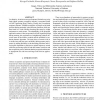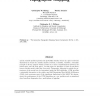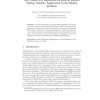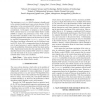98 search results - page 2 / 20 » Competing Hidden Markov Models on the Self-Organizing Map |
WIAMIS
2009
IEEE
14 years 1 days ago
2009
IEEE
An adaptive, invariant to user performance fluctuation or noisy input signal, gesture recognition scheme is presented based on Self Organizing Maps, Markov Models and Levenshtein...
IADIS
2004
13 years 6 months ago
2004
We have developed models of how strategies are constructed and retained as male and female high school and university students gain experience in solving online qualitative chemic...
NECO
1998
13 years 5 months ago
1998
Latent variable models represent the probability density of data in a space of several dimensions in terms of a smaller number of latent, or hidden, variables. A familiar example ...
ICA
2012
Springer
12 years 27 days ago
2012
Springer
In this contribution, new online EM algorithms are proposed to perform inference in general hidden Markov models. These algorithms update the parameter at some deterministic times ...
ICASSP
2011
IEEE
12 years 9 months ago
2011
IEEE
The maximum a posteriori (MAP) criterion is broadly used in the statistical model-based voice activity detection (VAD) approaches. In the conventional MAP criterion, however, the ...




